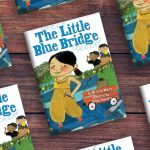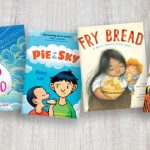It is a genuinely noteworthy accomplishment to be able to take a real-life story—one to which many readers already know the ending—and still manage to turn it into a riveting account full of suspense and adventure. But that is exactly what Christina Soontornvat has done with All Thirteen: The Incredible Cave Rescue of the Thai Boys’ Soccer Team (Candlewick, 2020). Soontornvat’s scrupulously researched middle grade nonfiction title has received the 2021 Kirkus Prize for Young People’s Literature, a 2021 Newbery Honor, a 2021 Robert F. Sibert Honor, and was a Finalist for the2021 YALSA Award for Excellence in Nonfiction for Young Adults.
Not bad when Soontornvat says she went into the project terrified of writing nonfiction!
Here, Soontornvat talks with Lisa Bullard about the unexpected ways that All Thirteen has changed her personally, how she has come to have such a diverse array of children’s books to her credit, and her upcoming 2022 titles.
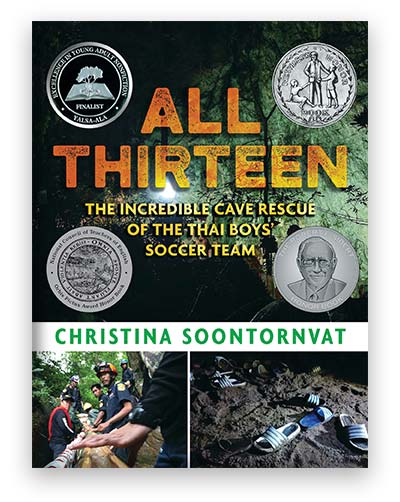
All Thirteen is one of those books that grabs a reader and won’t let go. It’s obvious that creating it required full immersion on your part: travel to faraway places, hundreds of hours of interviews, and lots of hands-on research. What part of that process stands out to you the most?
The interview process was the most emotional and rewarding part of making the book. I felt incredibly honored that so many people made the time to share their stories with me. They all had such incredible details and experiences to share, so most of the time I was just furiously scribbling notes or listening with my eyes wide. The time period when I met with most people (about three months after the rescue took place) seemed like the perfect time to interview them. The event was still fresh in their minds, but they had taken the time to process the emotional impact of it all and were able to communicate that with me.
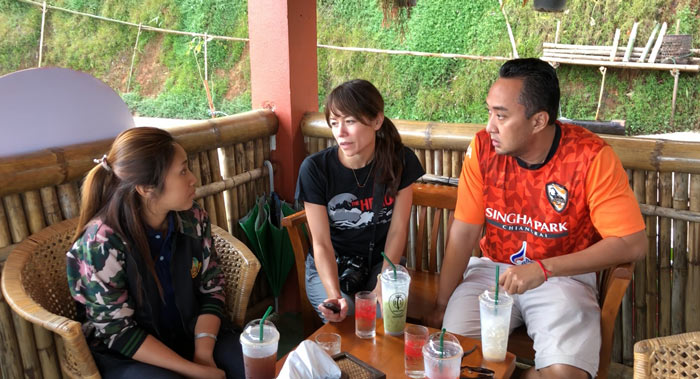
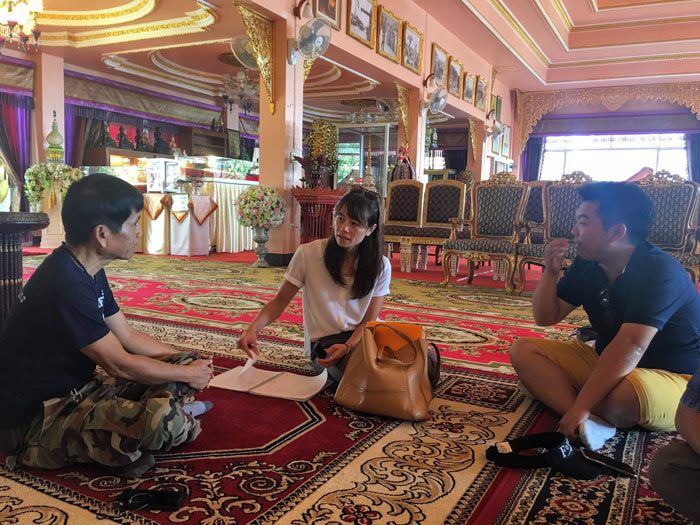
You were in Thailand visiting family when this real-life story began in June of 2018. Since then, there’s been worldwide attention given to the story, the amazing rescue itself, your writing of this multi-layered book, and your major award wins. How has the whole experience of this book changed things for you?
All Thirteen has had a big impact on my career. I think so many people have been drawn to this story for a number of reasons. It has definitely exposed me to a wider audience than I may have had otherwise, and it’s opened opportunities for more nonfiction projects, which is very surprising to me, because when I went into the project, I was terrified of writing it!
More personally, this book has changed me in much deeper ways than I could have ever expected. It helped me see that human beings are so much stronger than we think we are, and our mentality and worldview is much more important than any physical skills we possess. That has been a very powerful lesson to take forward with me, and it especially helped me navigate the pandemic.
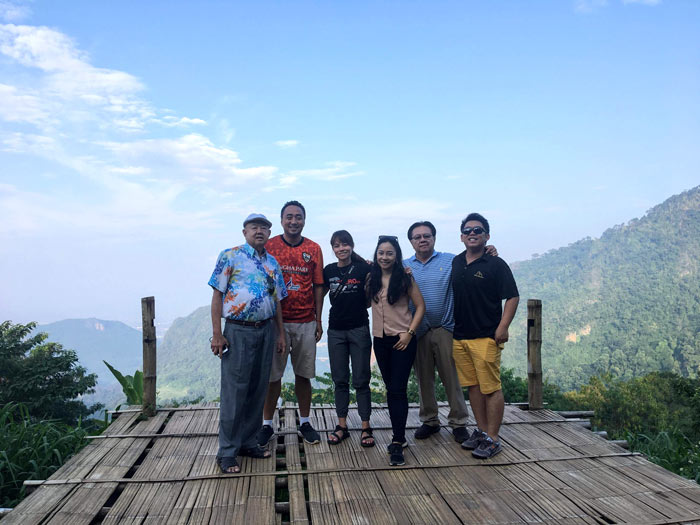
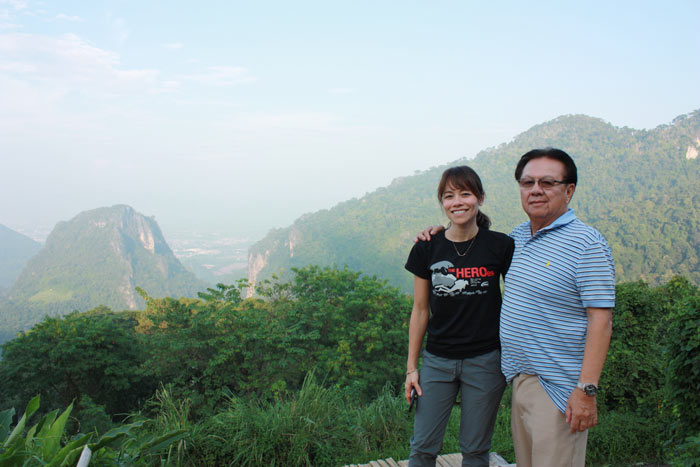
Human beings are so much stronger than we think we are, and our mentality and worldview is much more important than any physical skills we possess.”
I’ve read that you approached All Thirteen with the hope of presenting a point of view that was being overlooked by other people writing about the event: the perspective of the people of Thailand, who invested so much of themselves to rescue the boys. What was it like to “translate” your own understanding of the culture of Thailand to young people in the United States who might know very little about that country?
Because I grew up in a community that didn’t have a large Thai or Asian population, I feel like I have a lot of experience introducing or explaining elements of Thai culture to non-Thais. Making sure that Thai people, culture, and customs were portrayed with accuracy and respect was really important to me when I was writing this book. I believe that it actually helps readers to have a deeper understanding of the story overall.
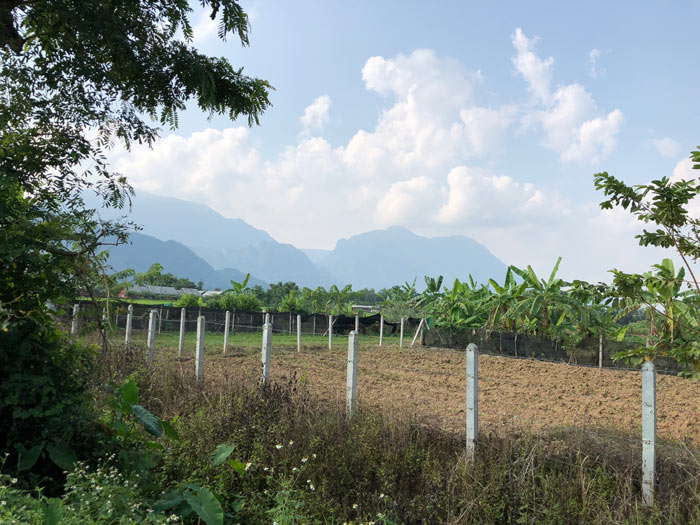
What’s your best advice for young writers who are trying to tell their own real-life stories?
Remember what makes YOU love a story. When we connect with nonfiction, it’s usually because we are connecting with the human element, the emotional element of the story. We rarely feel a strong reaction to just plain facts. I would advise them to focus on what parts of the story elicit strong emotion. Make that the central piece and use the facts to support that emotional reaction.
When we connect with nonfiction, it’s usually because we are connecting with the human element, the emotional element of the story.”
Your books cover such a wide range of ages, genres, and topics: from middle grade fantasies like A Wish in the Dark (Candlewick, 2021) to true-life rescue stories like All Thirteen, to charming wish-fulfillment picture books like The Ramble Shamble Children (Nancy Paulsen Books, 2021). Does working on such a diverse array of projects feed your creativity?
I definitely feel more creatively fulfilled when I work on a variety of projects. I like feeling challenged and just a tiny bit scared of the thing I’m working on. I believe that each project should make me grow and advance as a writer, so I can’t imagine working on just one age group or genre alone.
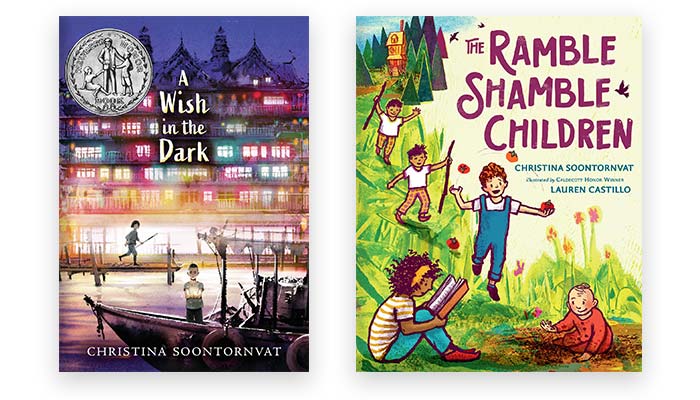
Given that some of your books appear to be so different (at least on the surface), is there something that links them all together in your mind?
One theme that seems to keep popping up in many of my books is the idea that one small person can have a big impact on their world. This is a fundamental belief that I have about humanity, but it’s also one that gets tested often by the troubles in our society. I think I write about this theme because I need the reminder that we can all make a positive difference in the lives of others.
One theme that seems to keep popping up in many of my books is the idea that one small person can have a big impact on their world.”
Your own educational background is weighted towards an affection for STEM-related subjects, and yet you’re now a creative writer who pens fantasy stories. In other words, you definitely don’t fit into just one box! What has that taught you about how adults ought to approach young people?
I think probably the biggest thing adults can do for our young people is to internalize the idea that there is no such thing as a “STEM person” or an “artistic person,” and then make sure we are not reinforcing those stereotypes with our words or actions. Make sure students have lots of opportunities to experience subjects in multidisciplinary and diverse ways (project-based learning is great!) and “meet” (or watch videos of) professionals who are using lots of different skills in their careers. I loved my experience with engineering in college and as a young professional, but I think I felt very lost at times because I had always been taught that I was a “math and science” person. Branching out into the arts felt scary because I had never viewed myself through that lens.
I think probably the biggest thing adults can do for our young people is to internalize the idea that there is no such thing as a ‘STEM person’ or an ‘artistic person,’ and then make sure we are not reinforcing those stereotypes with our words or actions.”
Is it true that you have two new books coming out in the spring? What would you like to tell readers about these forthcoming titles?
Yes, both books come out in April 2022! The Last Mapmaker (Candlewick, 2022) is a middle grade fantasy set in a Southeast Asian-inspired world; it’s about an ambitious young assistant to a famous mapmaker who is hiding a secret about her true identity. She joins an expedition to chart the southern seas and soon learns that she isn’t the only one aboard with secrets. The ship is heading for the fabled Sunderlands—a land of dragons, riches beyond imagining, and dangers that will test how far she is willing to go to achieve her dreams.
And To Change a Planet (Scholastic, 2022) is a picture book illustrated by Rahele Jomepour Bell that presents the subject of climate change to children with both truth and hope.
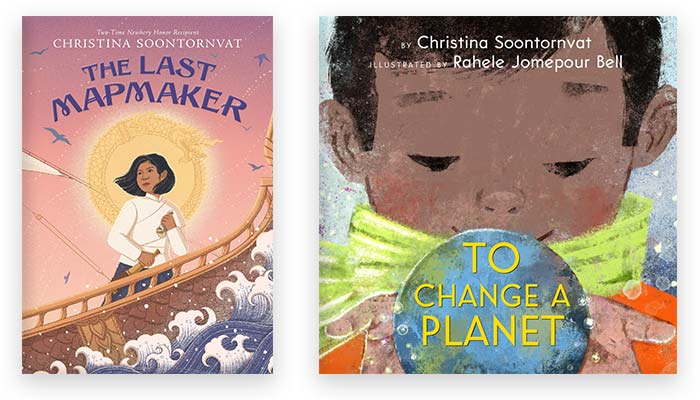
What are the best ways for readers to connect with you or to follow you on social media?
On Twitter I am @soontornvat and on Instagram I’m @csoontornvat. Students and educators can send me an email or learn more about my books through my website at www.soontornvat.com.





